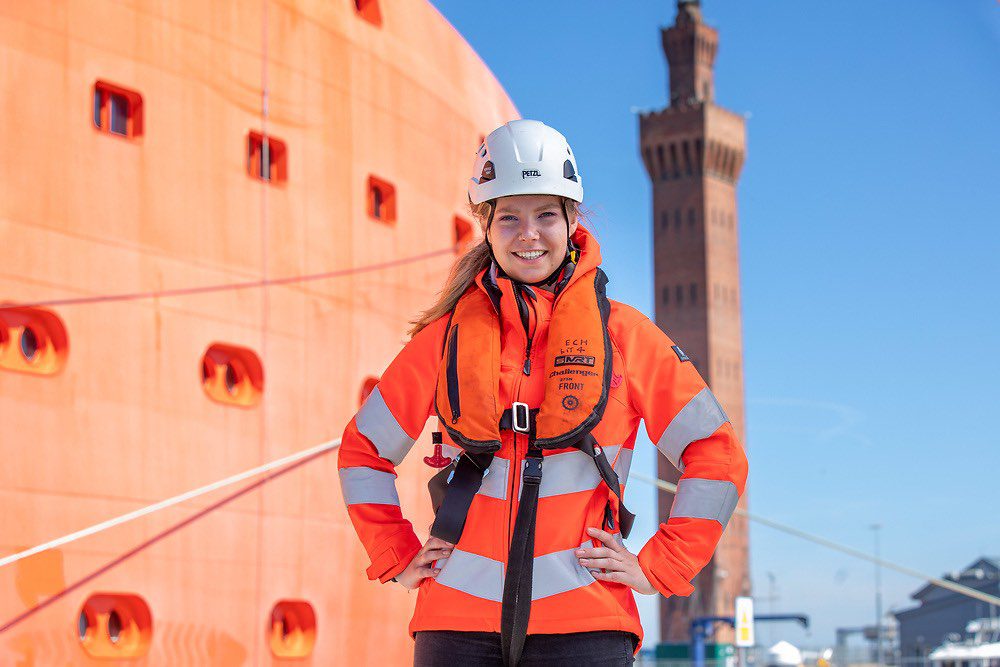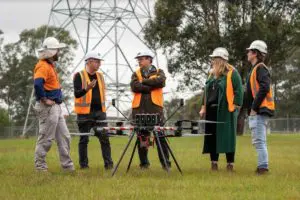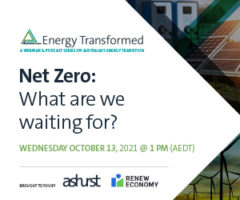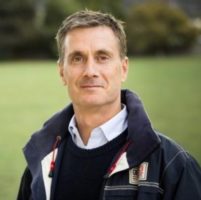The closer Australia inches to building its first, actual offshore wind project – most likely the Star of the South in waters off the coast of Gippsland, in Victoria – the more frantic and fantastical become the efforts to torpedo the renewables sub-sector before it has even launched.
Australia’s uniquely polarising brand of opposition politics, a particular specialty of the Liberal National Coalition, has quickly divided communities into “for” and “against” offshore wind.
It uses both bizarre claims (wind turbines will block the sunrise) and by stirring fear and doubt (wind turbines will kill whales and decimate fishing industries). Considered, evidence-based discussion is rarely on the agenda.
Just this week, news outlet Crikey reports that the Australian Fishing Trade Association, a leading force in opposition to offshore wind in coastal New South Wales, happens to be chaired by a former Liberal MP who claims “the turbines threaten Australia’s national security by providing places for foreign submarines to hide.”
Seriously.
So as the debate in Australia slips further and further away from reality, we thought it would be interesting to take a slice of life from a part of the world where offshore wind is up and running and generating power – and see how it’s all going.
The following is a lightly edited transcript of an interview with Bridie Salmon, a UK offshore wind technician who grew up in a fishing family in the port town of Grimsby, and who decided not to go to university in favour of doing an apprenticeship with Ørsted, and is now a team leader.
Grimsby is Ørsted’s base for the Lincs wind farm – a 270MW operational project 8km off Skegness, developed by Ørsted and Macquarie Green Investment Group; and for the huge Hornsea 2 project, which at 1.3GW is currently the world’s largest completed wind farm, off the coast of Yorkshire.
How did you find your way into the offshore wind industry?
I was kind of burnt out on education [after finishing high school] so I went travelling at 18. After several years away I went home [and was based] in Grimsby, sort of working in hospitality, and Orsted was coming onto the scene.
My dad’s on the docks – we have a 100 year-old smokehouse where I used to slice salmon for him. … So I would go to the fish markets and I’d see these big fancy boats come in and I thought they look really cool.
The [Grimsby Docks] is really old and a lot of it’s boarded up and run down and this kind of new industry was coming in and I thought, ‘hang on, this seems quite interesting.’
Then I applied for the apprenticeship and got in – about 800 people applied and I was one of seven – and I’ve not looked back since. It’s been unreal!
I did a year at college and then got offshore in the second year and I’ve been on the tools and worked my way up. I just finished my apprenticeship this year and I’m now a team lead, and I should be a troubleshooter by the start of next year. And it’s wicked. I absolutely love it. Only been seasick a couple of times!
If 800 people applied and only seven were accepted for the apprenticeship, what where they looking for in applicants?
I’ve got no engineering background; I’ve got no family from engineering …but they can teach you that. What they’re looking for is in the personality… I hit the passionate card, like, 100% and the hard working [card].
Teamwork is a massive one, because you’re working offshore with these guys – you’re with a team for a long amount of time. So if you’re going to a service [of a turbine], for example, you need to be able to work well with your colleagues and have those relationships.
So, to have the kind of personality that fits in well and just gets down and dirty works hard is a massive kind of thing that they look for.
What does the average day at work involve for you these days?
I’m on Lincs wind farm which is a CTV site – that stands for crew transfer vessel.
I sail out every day – it takes an hour and a half to get there. So I get up at 5am and then we leave the dock at 6am and sail out to the wind farm where we spend the rest of the day doing service, troubleshooting, maintenance, preventative maintenance kind of thing.
So the day really varies – it can also be retrofits and just making the turbines better. So yeah, it’s a large amount of different kinds of jobs we’re working on: mechanical, electrical systems as well as hydraulics. So it’s a massive variation, which is great.
And then I sail home again, an hour and a half, and get back home – it’s about 12 hours, door-to-door. But that’s week on, week off, and then I do some overtime and bits and bobs. So yeah, it’s great.
Did you work on the Hornsea 2 wind farm?
I just moved off there about three months ago. So that was a different kind of [role]. I lived out there for two weeks on the boat – a service operating vessel. And you get your own room. There’s a gym, there’s people on there that cook for you and clean. And so you live out there for two weeks and work every day.
And they’re on the big new turbines, the direct drives – a bit cleaner than the old ones! And yeah, so it’s a slightly different kind of way of working.
On Hornsea 2 we’d have, if it was a service, we’d get a 10 person team on there and we’d do a one-stop service. So we’d do the whole service on the turbine in one day. And then on the other wind farm, Lincs, that would be a three person service and it would take about four days.
Did you ever think to yourself, when you were backpacking around Australia or working in hospitality that you would one day be working on huge wind turbines out in the sea? Is this something anyone could do?
One-hundred per cent, anybody can do it. I think, again, it’s the mindset. If you’re willing to learn then it is such an easy industry to get into in that regard. … a lot of it is you learn on the job. It’s a hands on experience. So once you’ve done a job once you know how it’s done, and we’ve got so much support.
Definitely I would say anybody can do it. …If you can do hard work, you don’t mind getting up early and you can work well with other people this is absolutely an industry that I think people should get into.
You were working in a bar and on the docks in Grimsby when the offshore wind industry came to town. These would have been good places to get a gauge on how people were feeling about the industry. How has it been received?
It’s been a massive change for the community. Ørsted pride themselves on hiring a large percentage of the people from a local area, so within an hour commute, so you’re giving high paid jobs to a low income area. And obviously we’re gonna plug [that money] back into the area when we go out for drinks. So it creates a little circular economy.
They’ve invested a million pounds into the youth centre, which we so desperately need, and it’s great for the next generation; they’re always present in school assemblies and career guidance, and they sponsored the 10k [run]. So with Ørsted, now everyone knows someone who works for them.
It’s great, because the docks, yes, we were the … largest fishing port in the world and we’re still the largest producing of fish – on the factory side. But it’s great to be alongside renewable energy and get … places on the docks working and a bit more movement there, which is really nice to see, because we’re a very strong community.
So there hasn’t been any clashing of the industries – of offshore wind with the fishing industry, for example? Has there been any big push-back from the community?
No, not at all. So … for example, the turbines that are closest to the coast, they actually create a grounding for like, more marine life [which has been a good thing for commercial fishing]. … And we still let people fish within the wind farms and everything.
People are often worried about how close [the turbines] are, but they’re so far away, you can hardly see them. They’re a tiny speck in the distance and they just sit there, quite pleasantly rotating.
So everybody’s been fine. And if anything, it’s like I say, they’ve invested into the docks [and are] sort of putting use into the docks and giving so much work to the area that there’s been hardly any push-back.
And what about your future work prospects? Is there a chance you could come back to Australia to work in our offshore wind industry once it’s up and running?
Yes, absolutely! The best thing with Ørsted is that they’re not a hierarchical company. So they give you opportunities to move between departments as well as up. So if I, for example, wanted to go into the media side of things, they’d give me that opportunity to jump across, which is great.
It opens a door so you can have several different career prospects within the same company, which is really nice security … Because having worked in hospitality … you sometimes don’t know what you’re going to be doing in six months time.
It’s been great for my mental health to know that I’m going to be with Ørsted till I retire and, yeah, if I could get to Australia with that, then it’s certainly going to happen!










